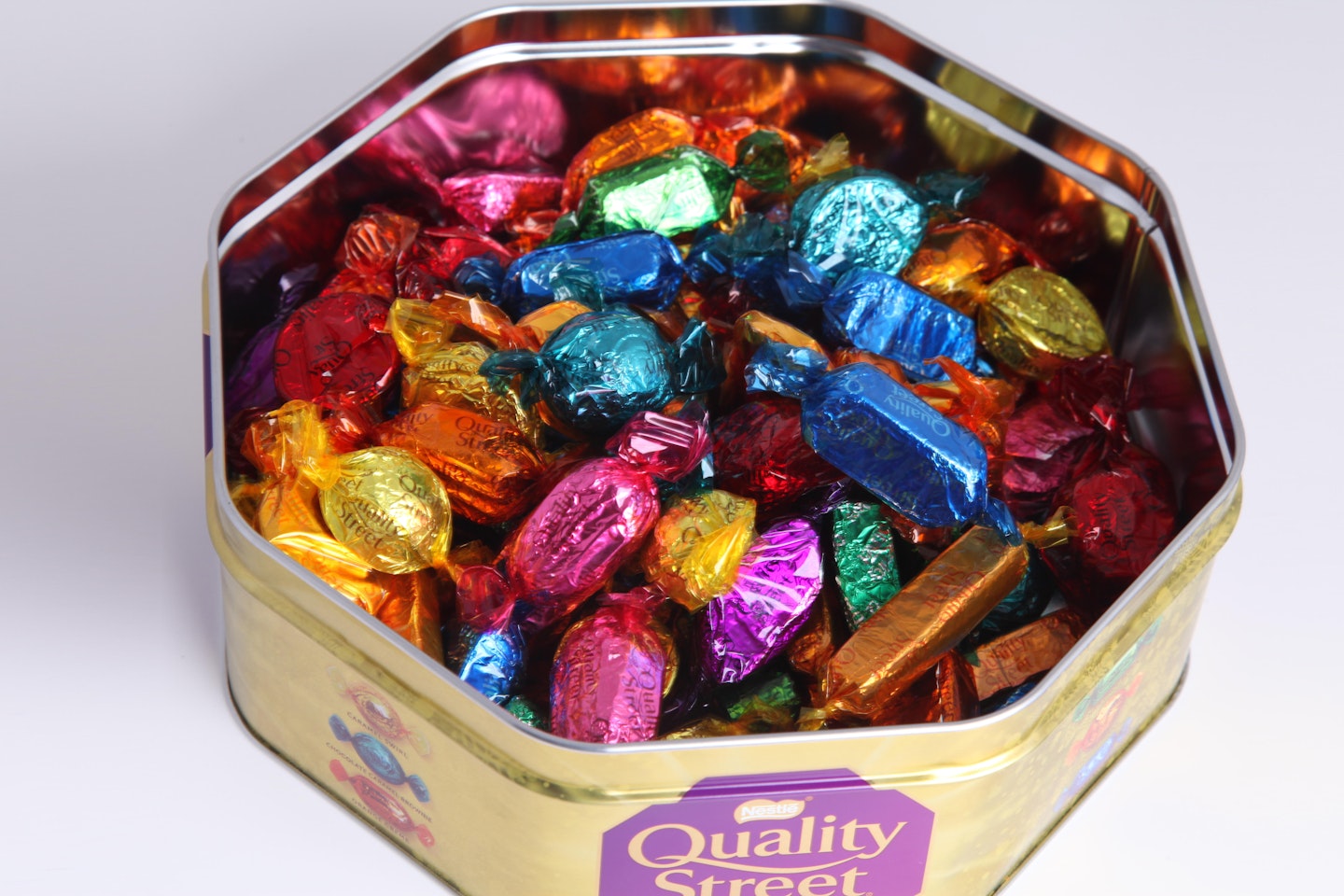Whether you always cream off all the purple ones first or have a strange hankering for the blue coconut eclairs no one else ever seems to want, we’ve all got a favourite Quality Street. And it’s a subject that has now been dividing friends and family for 85 years.
In fact, even now, in this anniversary year, there has been outrage and arguments as the manufacturers have added the first ever white chocolate sweet – called a crème caramel crisp – to special collectors’ tins sold exclusively at John Lewis stores.
It was all started by Harold Mackintosh, son of the original chocolate pioneers John and Violet, who spent their life savings on setting up a confectionery empire in their hometown of Halifax, West Yorkshire and invented a new kind of sweet that mixed hard toffee with runny caramel.
Having inherited his mum and dad’s business, in the Thirties Harold realised that it was only the wealthiest of society who could afford boxed chocolates with pretty packaging and tasty flavours. He saw this as an injustice and set out to put it right by making a box of chocolates that looked lovely but was cheap enough for working families to enjoy – the first ones cost about £3.70 in today’s money.
To keep the cost down, rather than having each chocolate separated in the box, he had each piece individually wrapped in coloured paper that would create a ‘sensory feast’ and invented the world’s first twist-wrapping machine to make that happen. And instead of a cardboard box, he picked a tin that would be hardy and practical as well as making sure the chocolate aroma burst out as soon as you pulled off the lid.
As for the name, that came from a play written by JM Barrie who would later go on to write the children’s classic, Peter Pan. Two characters from that same play also inspired the figures of Miss Sweetly and Major Quality, who appeared on the front of every Quality Street tin until 1998 and were meant to evoke feelings of nostalgia.
Launched in 1936, the first Quality Street tins contained 18 varieties of sweets, some of which are still found in today’s tins, from the caramel swirl to the green triangle – although it was originally given the rather posh name of noisette pâté.
Other sweets came and went over the years, from the gooseberry cream to the fig fancy and apricot delight, while the purple brazil nut was changed to a hazelnut in the Second World War because of shortages.
Quality Street was a huge hit with families, and it soon became a global success too. Dubai and Canada are among some of the biggest international fans while in China, Quality Street are routinely given out at wedding receptions.
Over the years, the brand has acquired a very special festive association as many families have Quality Street in the house for Christmas, as essential as the turkey. While no-one’s entirely sure how this happened, it’s thought the jewel-like colours of the wrapping and the fact it’s designed for sharing made it ideal for special, family occasions.
Quality Street prepare for this Christmas onslaught early. Nestlé – which now owns Quality Street – told us it starts producing Christmas tins from March, then the factory runs 24 hours a day, seven days a week until the big event. This is to ensure there are enough tins of Quality Street in the shops – so every family has the chance to argue over who has the purple one!

Did you know?
More than 480 tonnes of liquid chocolate and 350 tonnes of toffee are used every week to make Quality Street, which is still manufactured on the same site in Halifax, West Yorkshire, as it was 85 years ago
